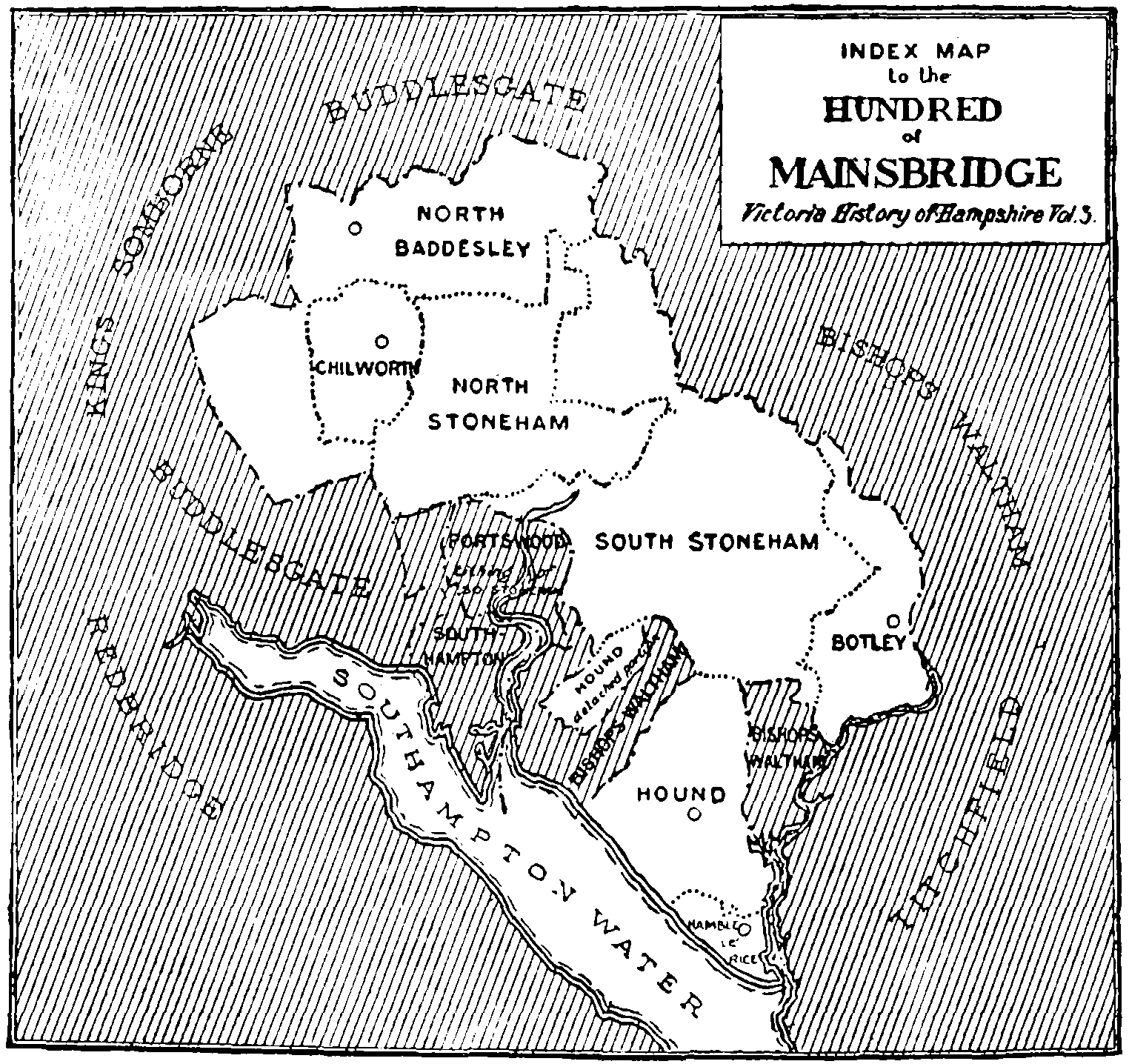A History of the County of Hampshire: Volume 3. Originally published by Victoria County History, London, 1908.
This free content was digitised by double rekeying. All rights reserved.
'The hundred of Mainsbridge', in A History of the County of Hampshire: Volume 3, ed. William Page (London, 1908), British History Online https://prod.british-history.ac.uk/vch/hants/vol3/p462 [accessed 22 February 2025].
'The hundred of Mainsbridge', in A History of the County of Hampshire: Volume 3. Edited by William Page (London, 1908), British History Online, accessed February 22, 2025, https://prod.british-history.ac.uk/vch/hants/vol3/p462.
"The hundred of Mainsbridge". A History of the County of Hampshire: Volume 3. Ed. William Page (London, 1908), British History Online. Web. 22 February 2025. https://prod.british-history.ac.uk/vch/hants/vol3/p462.
THE HUNDRED OF MAINSBRIDGE
CONTAINING THE PARISHES OF
| NORTH BADDESLEY | CHILWORTH | HOUND WITH NETLEY |
| BOTLEY | HAMBLE LE RICE | NORTH STONEHAM |
| SOUTH STONEHAM (fn. 1) | ||
At the time of the Domesday Survey Mainsbridge Hundred covered a much larger area than it does at present, for in addition to the above parishes it also contained Shirley in Millbrook, Redbridge, Boyatt, and Woolston. Hound, although nominally belonging to Warnford in King's Somborne Hundred, paid geld in Mainsbridge, with the men in the adjoining vill of 'Letelie' or Netley. (fn. 2) At this period the total assessment of the hundred was 25 hides, showing a decrease of 7 on the assessment of the hundred made before the Conquest. Mainsbridge was a royal hundred and until the fifteenth century remained, so far as is known, entirely in the hands of the crown. In 1280 an inquiry was made into the right of the men of the abbot of Netley to freedom from doing suit at the king's hundred court. It was proved that the abbot had received a grant from Henry III releasing his villeins in the tithings of Hound, Shotteshal (Satchell), and Sholing in Hound, from all service at the shire and hundred courts, and from payment of all scot and geld, and tolls, (fn. 3) a privilege which the tenants of the abbey seem to have always claimed from this date. In 1467 John Davy was granted the hundred court with all its issues and profits for life in return for an annual rental of 40s. 8d. payable to the king. (fn. 4)

INDEX MAP to the HUNDRED of MAINSBRIDGE
The hundred court was customarily held under an ash-tree in Swaythling in South Stoneham at Martintide. (fn. 5)
